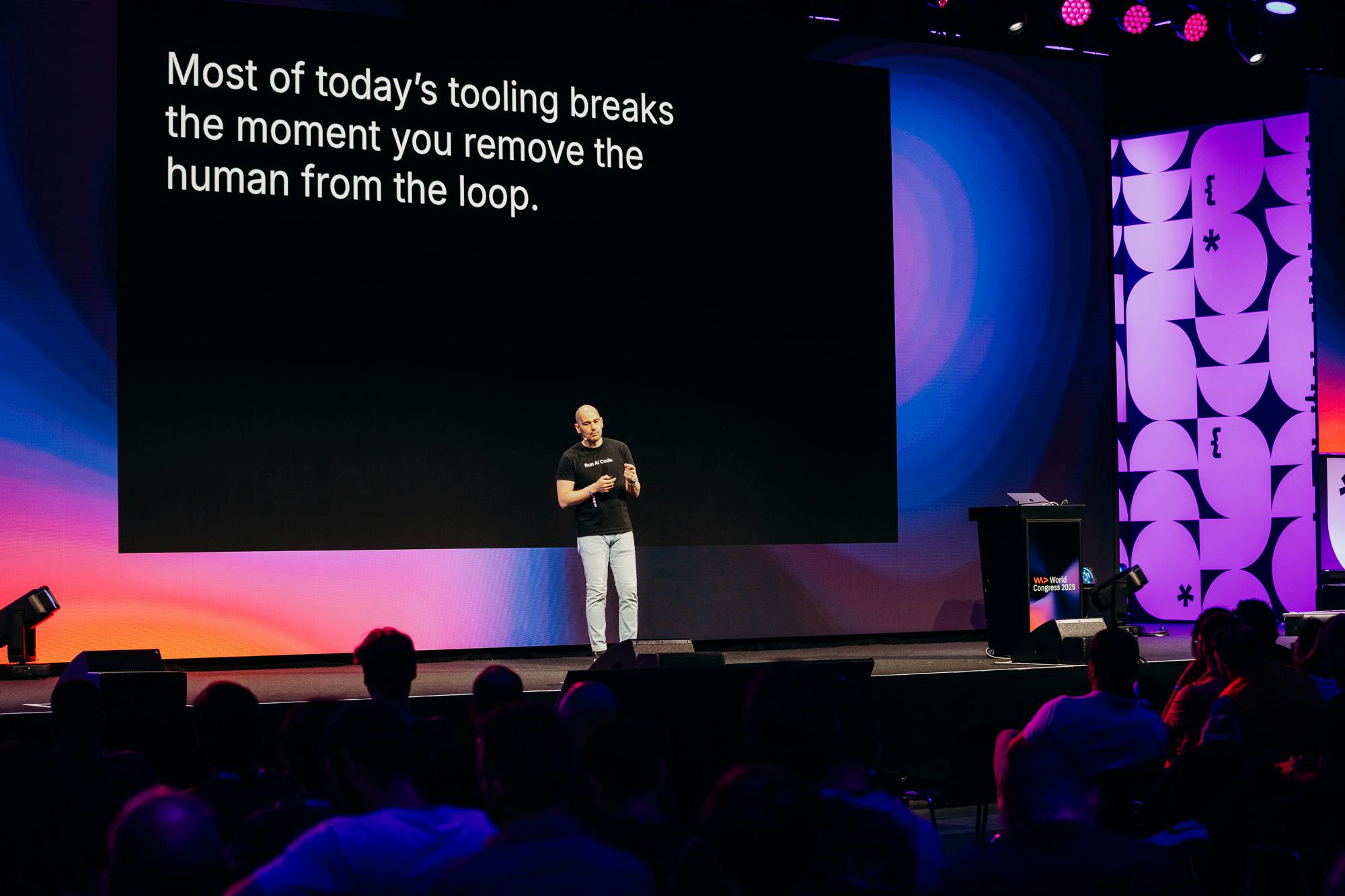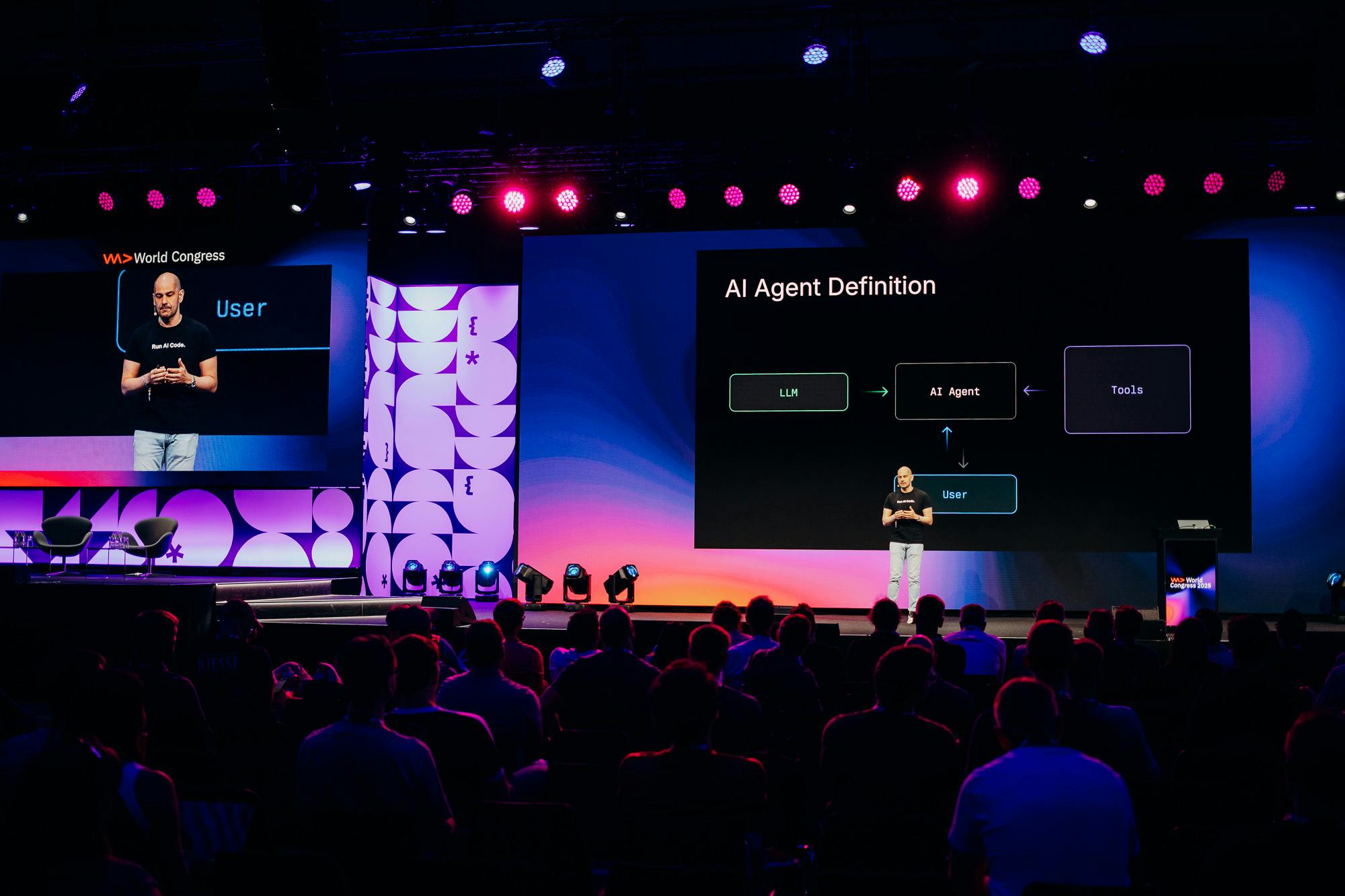WeAreDevelopers World Congress 2025 was massive. Thousands of developers, packed stages, and a lot of future being built in real time.
Ivan took the stage to talk about Agent Experience and why most tools today break the moment you remove a human from the loop.
We had a booth, met a lot of builders, and as always, great to catch up with the WeAreDevelopers team. Thanks for having us and congrats on another great conference.
Catch the full talk from WeAreDevelopers World Congress 2025 in Berlin on Youtube

TL;DR
AI agents are already outpacing traditional development models.
Most tools break when you remove humans from the loop.
Daytona built a serverless, long-running, stateful runtime designed for agent-native workflows.
If agents can’t use your product, no one will.

From Developer Experience to Agent Experience (AX)
The original mission behind Daytona was to fix environment inconsistency for developers. But the world has shifted. Developers aren’t the only ones writing code anymore, agents are now writing and executing code independently.
The implication? Developer Experience (DX) is table stakes. Agent Experience (AX) is the next paradigm.
Sean Roberts (from the Netlify team) put it best:
“Agent Experience is how easily agents can access, understand, and operate within a digital environment to achieve user-defined goals.”
Sean Roberts, Netlify
We can expand on this:
“It’s not enough for agents to understand and operate, they must do so autonomously.”
The New Reality: Agents Are the Product
We’re no longer building tools to assist developers. Increasingly, agents are the developers.
Examples are everywhere: Cognition, Harvey, Cursor, Decagon, Lovable, Vibes
Each of these spins up task-specific AI agents as the product interface.
But here's the catch: most tools these agents try to use were built for humans. They expect visual UIs, clicks, and form fields, none of which agents care about.
What Makes a Tool Agent-Native?
Three foundational needs:
Authentication
Example: Arcade.dev allows agents to access services without credential exposure. If they hit an auth wall, humans can re-auth, and agents resume work.
Agent-Readable Docs
Stripe’s .
mdon URL hack delivers raw Markdown, easy for agents to parse.llms.txtis becoming a best practice: plaintext, compressed documentation in a single file for LLMs to ingest efficiently.
Machine-Native Interfaces
If your product can't be controlled via API, agents can’t use it. That simple.

Daytona's Approach: Built for Agents from Day One
“If an agent is a digital human, Daytona is their digital MacBook.”
Daytona’s new infrastructure is:
Serverless
Long-running
Stateful
This mix doesn’t exist in traditional cloud environments. So Daytona built its own, on bare metal, skipping AWS, GCP, and others entirely.
Key characteristics:
Lightning-Fast Boot Time
Runtimes spin up in 90ms (including latency) - faster than a blink (110ms).
Long-Running Sessions
Tasks don’t die mid-execution. Agents can run environments for hours if needed.
Headless, Machine-Native APIs
Terminal, LSP, Git, file system - all accessible via APIs, not GUIs.
Agents can request environments, execute code, commit changes. All without needing visual output or human input.
New Agent-Native Primitives
Daytona went beyond APIs. In new primitives agents need to be autonomous:
Declarative Image Builder
Agents shouldn't wait for humans to create custom Docker images. With Daytona, they don't have to.
Agents can define and build their own environments on the fly, entirely via API:
1# Define the image2dynamic_image = (3 Image.debian_slim("3.12")4 .pip_install(["pytest", "mypy", "ruff", "black", "gunicorn"])5 .run_commands("apt-get update && apt-get install -y git curl")6 .workdir("/home/daytona/project")7 .env({"ENV_VAR": "My Environment Variable"})8 .add_local_file("file_example.txt", "/home/daytona/project/file_example.txt")9)1011# Create sandbox with the image12sandbox = daytona.create(13 CreateSandboxFromImageParams(image=dynamic_image),14 timeout=0,15 on_snapshot_create_logs=print,16)17
Daytona builds and spins the image, no human intervention needed.
Daytona Volumes
Shared data across runtimes without re-uploading:
Agents create volumes once
Mount across 10s, 100s, 1000s of environments
Clean up automatically
Parallel Execution
Agents aren’t limited by serial thinking:
They can fork environments
Run 100 hypotheses in parallel
Pick the top result and fork again
Humans can’t do this. Agents can, and will.
Why This Matters
“If you’re still building tools that require a human to click a button, type a password, or read an error - you’re building for the past.”
Tools that can’t be used autonomously will be bypassed by those that can.
The agent boom is real:
Daytona launched just two months before this talk
13,000 signups
5,000+ created sandboxes
1,500 converted to paying customers
Result: $1M ARR in 8 weeks, the fastest infra growth in history
Final Thought
You don’t need to bet your company on agents tomorrow. But you do need to start building for a world where agents are not the assistant, they’re the user.
Agent Experience (AX) isn’t a feature. It’s the foundation.
Watch the Full Talk
Catch the full talk from WeAreDevelopers World Congress 2025 in Berlin on Youtube



